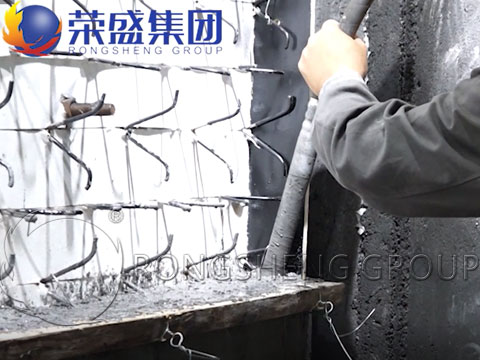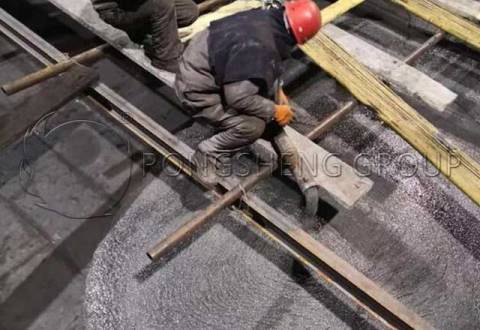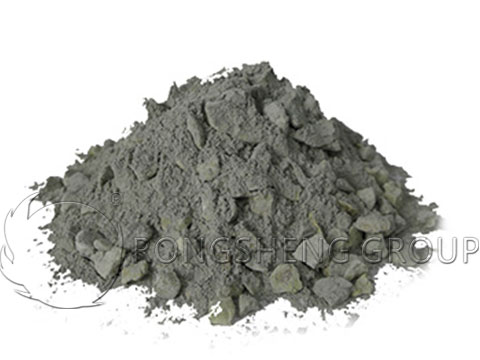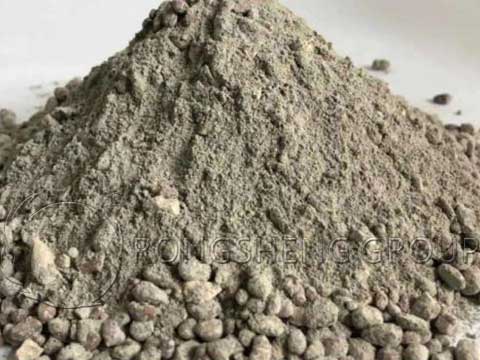There are many reasons why the strength of refractory castables decreases during construction. But there are no more than two reasons, namely temperature and the amount of water added during construction.
Why does the strength of castables decrease during construction?
Refractory castables are constructed in summer and winter. Due to different temperatures, the strength of the castables will decrease. When constructing at temperatures below zero degrees Celsius, the castables will generally not condense and the condensation speed will slow down. Therefore, during winter construction, the temperature of the construction site must be kept above 5°C. Only in this way can the construction proceed smoothly and the strength of the castables can be ensured.

In addition, the amount of water added is very important during the construction of refractory castables. Generally, the amount of water added to low-cement castables is 6-7%, and the amount of water added to lightweight castables is about 20%. The amount of water added to high-aluminum castables is about 12%. If too much water is added, it will cause dehydration and crystallization effects at medium temperatures, destroy the internal structure of the castables, and cause the strength of the refractory castables to drop sharply at medium temperatures. As a result, the porosity of the castable increases and the density decreases, which will seriously affect the strength of the castable when used.
In general, the calcium content of cement-bound castables will be high, which will reduce the load-softening temperature of refractory castables and worsen the thermal shock index. In particular, castables with high cement content have higher calcium content, and the amount of water added during construction is also larger than that of low-cement castables, and the strength will be affected to a certain extent.
Low cement castables have a lower cement content and a lower calcium content than ordinary refractory castables. The strength will also be better than ordinary refractory castables, which is also the advantage of low-cement castables. Because low-cement castables have a dense structure, low porosity, high refractoriness, and good thermal shock stability. Therefore, the current high-aluminum castables basically use low-cement castables.
However, low-cement castables have low cement content and will take a long time to set. During construction, we must pay attention to the temperature during winter construction, to ensure the stable strength of the castables. Take high-aluminum castables, which are used in large quantities, as an example. The strength is basically caused by chemical reactions. The reason for the chemical reaction is improper storage or the occurrence of pores.
In short, during the production process of high-aluminum castables, we must pay attention to the reasonable proportion during the process to overcome the expansion caused by medium temperature. To achieve the stability of strength during use.

Effect of cement addition amount in refractory castables on strength
If too little cement is added to the refractory castable, the early strength of the castable will be low and the hardening time will be too long. Especially in winter, non-condensation will occur. If too much high-alumina cement is added, the calcium in the cement can react with the aluminum and silicon in the raw materials at high temperatures to form low-melting products, which will affect the later use strength of the castables.
Generally speaking, the cement addition amount of high-aluminum castables will be higher than that of low-cement castables, and the proportion will be 10-12%. The cement addition amount of low cement castables is 6%-7%, and the cement addition amount of ultra-low cement castables is 2-3%. Therefore, with the development of actual usage, high-aluminum castables are basically no longer used on the market, and low-cement refractory castables are mostly used for lining.
When the additional amount of high alumina cement is less than 5%, the density of refractory castable particle accumulation gradually increases. The amount of cement added is small, and after the cement is dried, the effect on the reduction of bulk density is weak. However, as the amount of cement added increases, the bulk density tends to increase. If the cement addition amount is greater than 5%, a large amount of cement hydration products will lose free water and part of the bound water after drying, and the pores of the refractory castable will increase. As pores increase, the corrosion resistance of the refractory lining will decrease.
The amount of cement added has a great influence on the compressive strength of castables. When the cement addition amount is less than 5%, the total amount of pores left by the complete dehydration of the cement hydration product will be small, and the impact on the strength of the refractory castable will also be small. When the cement addition amount is greater than 5%, as the cement addition amount increases, the degree of close packing of castables gradually decreases due to excess cement fine powder. At the same time, the pores left by the complete dehydration of cement hydration products gradually increase. As a result, the density of the castable material decreases, and the loose structure strength also gradually decreases. At a high temperature of 1450°C, the gelling effect of cement will disappear, and a large amount of eutectic liquid phase will produce a liquid phase to fill the gaps. The formation of needle-like and columnar mullite in fine powder in the internal structure of refractory castables. The bonding between fine powder and granular materials is strengthened, and the compressive strength is generally improved.
When the refractory castable is at 1450°C and the cement content is greater than 5%, the compressive strength gradually decreases. This is related to the gradual increase of the liquid phase at a high temperature of 1450°C, which leads to the weakening of the supporting effect between particles in the castable.

